Exile Squadron - A Post-mortem
It’s the 24rd of January in 2020, the day I’m writing this post-mortem, and it’s been a little more than two months since the release of my second game, called Exile Squadron. Although I was working on the game in December and January, ironing out some bugs and making a Linux version, I considered it finished in November 2019. After the Christmas break, I’m ready to continue my gamedev journey, figuring out a new project. But before I do that I wanted to wrap up Exile Squadron (ES) with a few thoughts.
Even though it was my second game, creating ES was a daunting task for me. My first project – A Long Road Home – took me one year to make from scratch, while ES took two and a half. The reason for this is that A Long Road Home was made in the RPG Maker VX Ace engine, which is a beginner tool in the sense that you don’t have to code anything in it (although you can, to push the engine to its limits). I also used a lot of stock assets in my first game, both for graphics and sound/music. This basically meant that I only had to design the gameplay, write the story and puzzles and of course bring these into the engine. And even with a simpler engine, it was tough to create this adventure game, it being my very first project.

When it came to Exile Squadron, I wanted to improve myself and step up my game, so I decided that I will design, code, draw and compose the game from zero. I wanted to create everything myself. And although I didn’t succeed 100%, I came close. The reason for this was that I really wanted to improve, and I know that if I wanted to create unique and different games in the future, I have to learn and improve some skills of mine.
New Engine
For this, I needed a new engine, since RPG Maker didn’t do it for me anymore. Don’t get me wrong, this is a great engine, and some great games were done with it, but the truth is that if you want to create anything else than a classic JRPG with it, you really have to break down the engine with scripts, to overcome its limitations. And if I have to fiddle around with scripts, I might as well code a game from zero in a more freeform engine. That’s how I arrived to Gamemaker Studio. I didn’t hear about this engine before, but one day there was a great Humble Bundle sale, where you could buy the whole engine package for a very low price. This is an engine which is used for 2D games first and foremost, some really great games were created with is. Things like Hotline Miami, Hyperlight Drifter and Undertale.
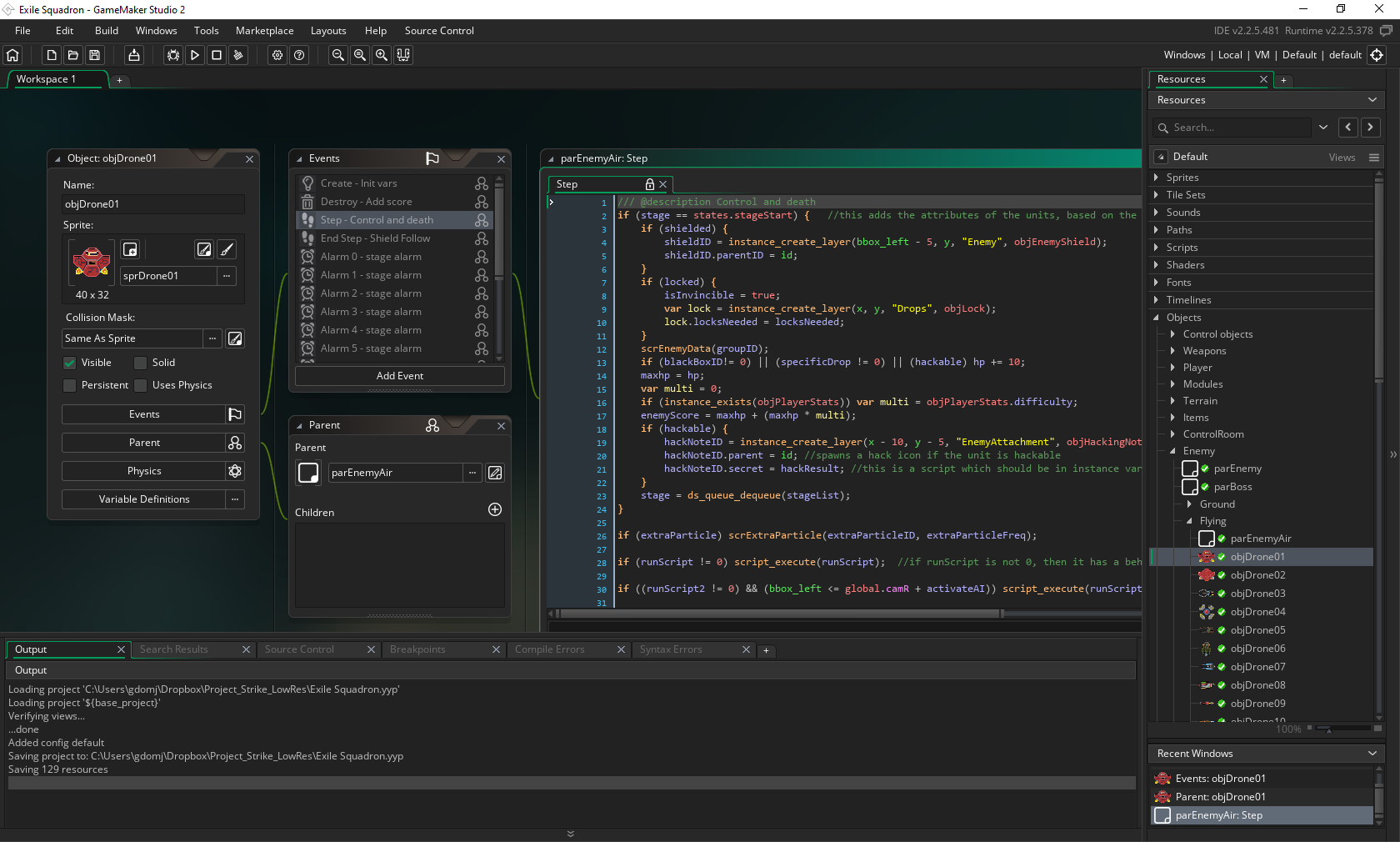
Although the game’s scripting has a Drag and Drop interface (which means you build up code logic with dropping down elements, similarly to Unreal 4), people recommended me to learn the programming language, called GML (GameMaker Language). So I started to do just that, and with the help of some great Youtube tutorials from Shaun Spalding, I managed to be more and more confident with it. Parallelly I started learning some Python, which is one of the most popular programming languages in the world, to understand programming logic a bit more, and get the hang of basic programming structure. This helped me a lot to code in GML, especially since there are some similarities between the languages. While I was learning GameMaker Studio version 1.4, the new version came out, so I switched to GameMaker Studio 2, and I’m using that since that point.
Design
When I started to get the hang of this engine, I started to brainstorm some ideas regarding my next games. I had a lot of ideas, which I scribbled down in my notebook, so in the future, I can come back to them. In the end, I decided that I will try to create an old-school shoot ’em up (SHMUP for short). I was playing with Jets ’n Guns and that time, which provided me a lot of inspiration, and made me enthusiastic about this genre. I always liked these games, although I can safely say that I was never a „pro” in them. Unfortunately, this will come back to me, biting me in the ass. More on this later.
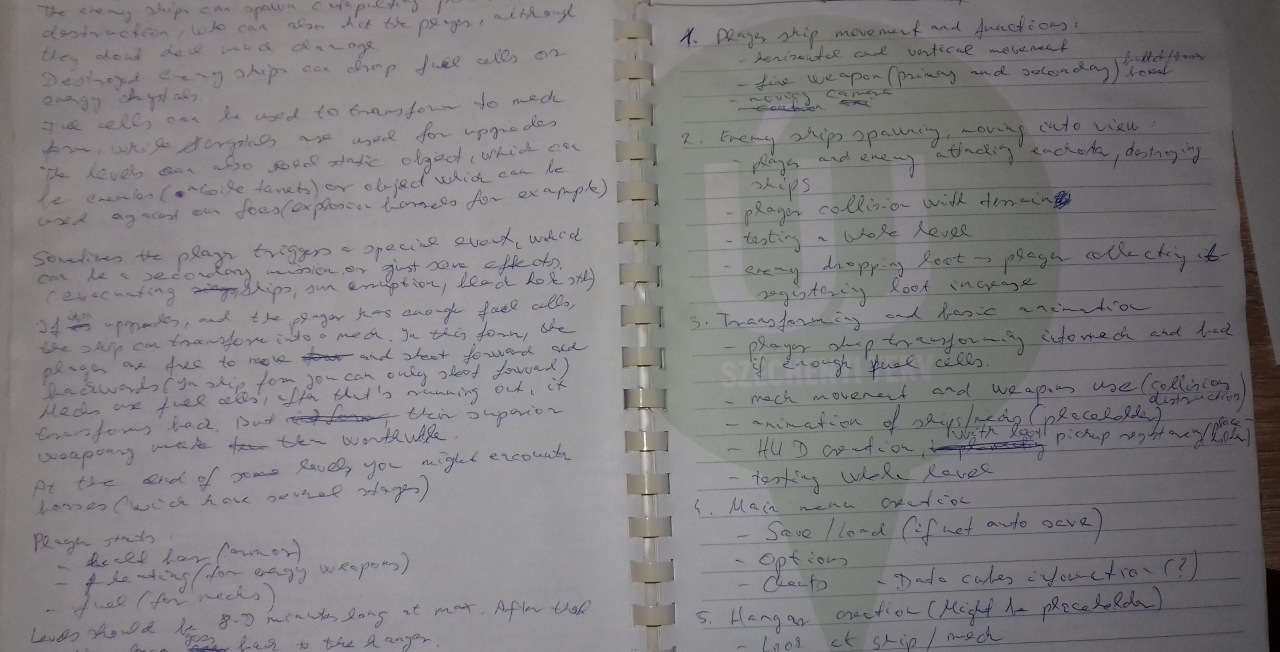
So I started to get some ideas about the game, I was thinking about the style of the game the gameplay etc. I wrote these down, creating some kind of design document. I can highly recommend creating this document if you are doing a serious project. Even though the details you write in them might change during development, in the beginning it provides great reference for you and helps to keep yourself on track. I wrote down the basic story, the style of graphics I want to use, the type of weapons, things like that. Using this document, I created the workflow of the project. I’m a kind of person who likes to plan everything in advance, which is exactly what I have done.
About graphics... As I’ve mentioned, I wanted to create every art asset in the game myself. Sigh… How should I put this? I suck at drawing. So you can imagine this was a huge hurdle for me. But just like coding, I started to practice some, drew spaceships, some logos to get the hang of it. After I decided that the game will use pixelart, I started creating pixelart ships. Well, you can see from the game that I didn’t actually succeed in creating high-quality art but I succeeded in creating my own art. I knew my limitations and quickly realized that I won’t be able to create a very good looking game, but it felt good that it was me who created the assets in Exile Squadron. And actually, I got some compliments about the pixelart, which was really heartwarming.
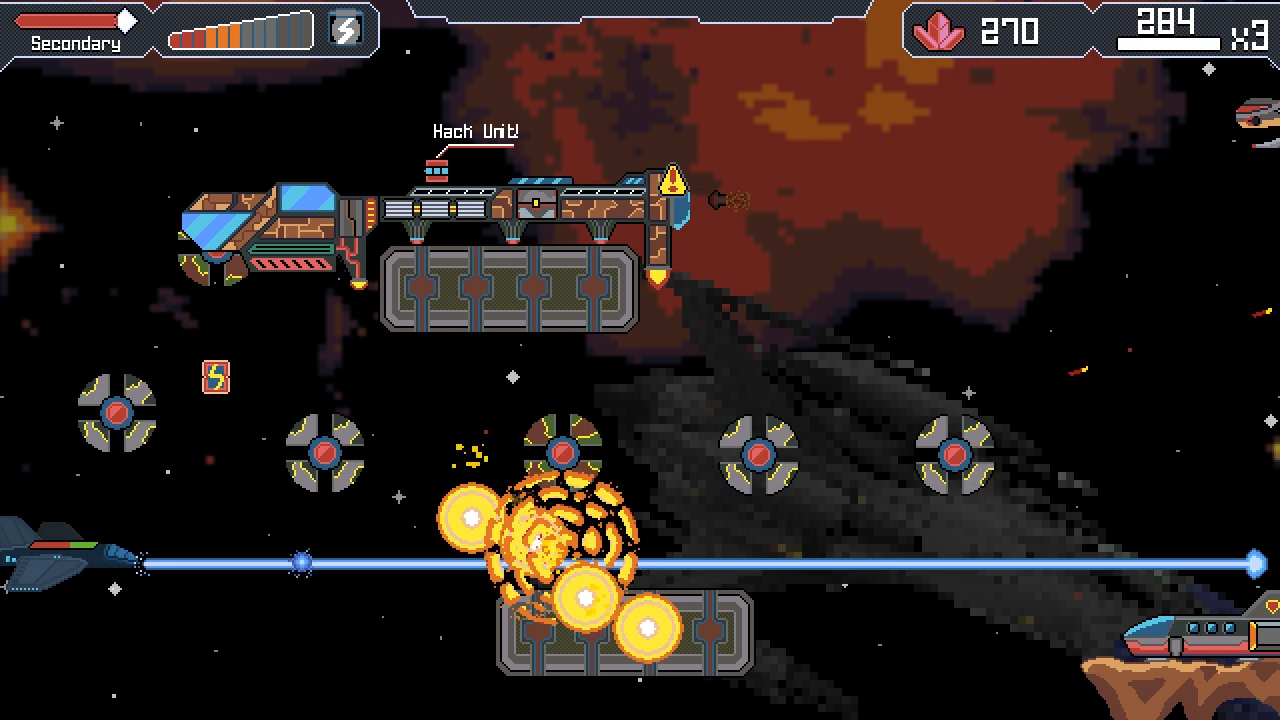
Cutting features
As for the design of the game, I obviously overscoped in the beginning, like most indie developers. I wanted the player spaceship to be able to transform between a spaceship form and a robot form. Also wanted space battles and land battles, a big story, and lots of weapons.
What was I thinking?
I started to create these, and thankfully I quickly realized that I won’t be able to achieve these goals. The game would never be finished if I sticked to these original ideas. So I scoped down the game. No transforming spaceship. No land battles. Although I kept the story, it was more static than I originally designed it. From dynamic cutscenes, I went to pre-mission briefings and backstory bits, which you could collect during missions.
I cut down the number of weapons, but I made them more distinct from eachother. I didn’t want to have similarly working weapons, like different types of lasers. My goal was to have equipment which all work differently and requires different tactics. So I made lasers, flak cannons, machine guns, bombs, EMP weapons, shields, attack drones etc. I think I succeeded in creating these weapons unique even though I had a problem with balancing them and making each of them meaningful. I also had to downscope the number of levels in the game. Originally I wanted to have at least 20 levels. From that, I went to 10, and from that, I went to 6. Not to mention that at first I created levels which took at least 10 minutes to finish (that’s not bad for a shoot ‘em up), before I realized that it was more fun to have shorter (4-5 minutes long), but more adrenaline-pumping levels.
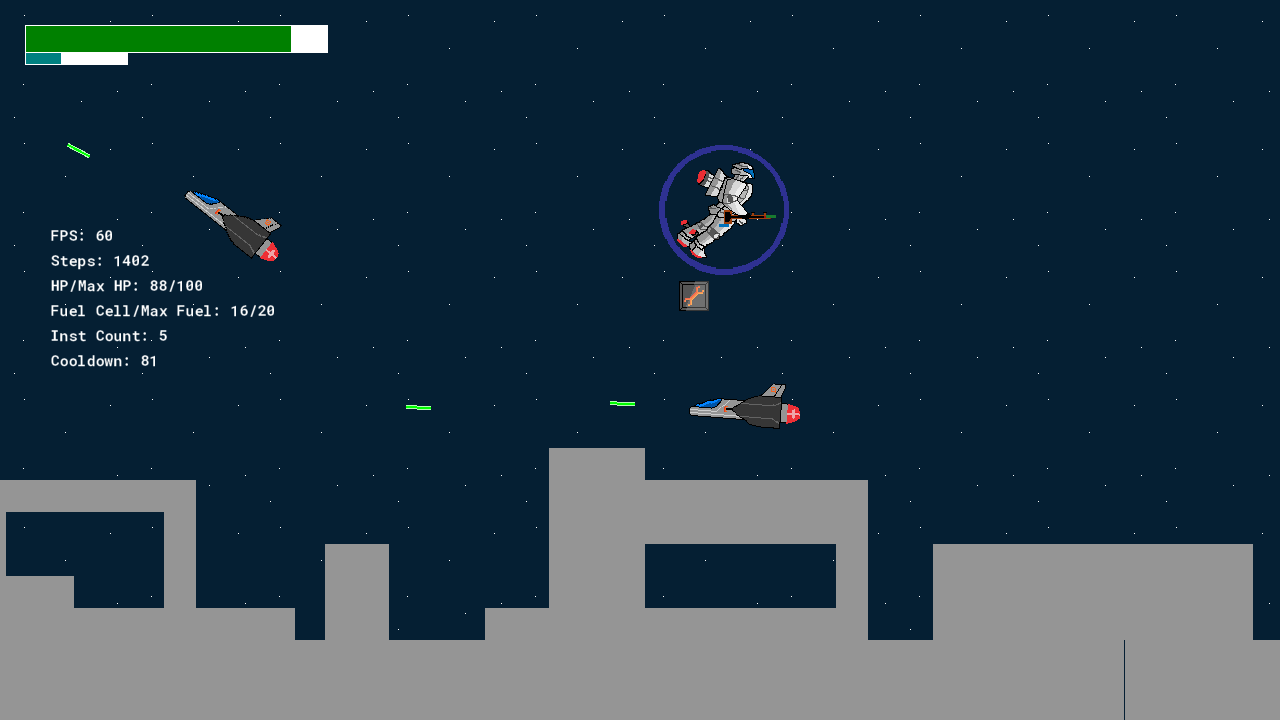
Who am I kidding? The truth is that I started to burn out when I created these long levels. This is why I cut back on some features. I remember that I already worked on the game for a year, and I didn’t have too much to show. This is where I started to lose steam, I became less and less enthusiast about my own project. That is the point where many developers just throw their project into the bin and start a new project. This is where my experience from my first game came in handy. As I learned there, you have to push through during these stressful times, you have to be persistent and not fall victim to the shiny object syndrome. So I cut features from the game, cut levels, accepted that this is the best graphics I can do at this moment, and continued to work on the game.
Because let's be honest, most of us won’t be able to make the perfect game, the dream game, especially not as a second project. I just had to teach myself to let things go. I know each project is like one’s baby, but this is just a game. I’m not saying that you shouldn’t try to create the best game you can, but you have to realize which are the points where spending more time on a project is not worth the extra time. Either because the game probably won’t be more fun, or you risk not finishing the game at all. After I accepted that I have to cut stuff and won’t be able to realize my original vision, it was easier to continue development.
As a result, the game has been finished during September 2019, and I could start looking for game testers. I never had too much luck with these, since I only got a few testers. I don’t know what I’m doing wrong, to be honest. I posted on social media, I posted on the game’s website, but I could only find a handful of them. Thankfully the testers I managed to contact gave me great feedback regarding the game. I couldn’t implement everything they suggested, but I think I managed to improve the game. The biggest problem arose from the fact that although I always liked shoot ‘em up games, I was never really, really good at them, which meant that the pacing of the levels, the enemy spawns and movement was far from the perfection of games like Jets ‘n Guns, Gradius and similar classics. Of course, I’m just a lone indie developer, but it still bugged me that the flow of the game was not as good as I hoped, and this stemmed from my lack of knowledge of the intricacies of the genre. Lesson learned: it’s not enough to like certain types of games, you have to understand the mechanics and their structure. I know this is basic, but I still managed to fall into this trap.
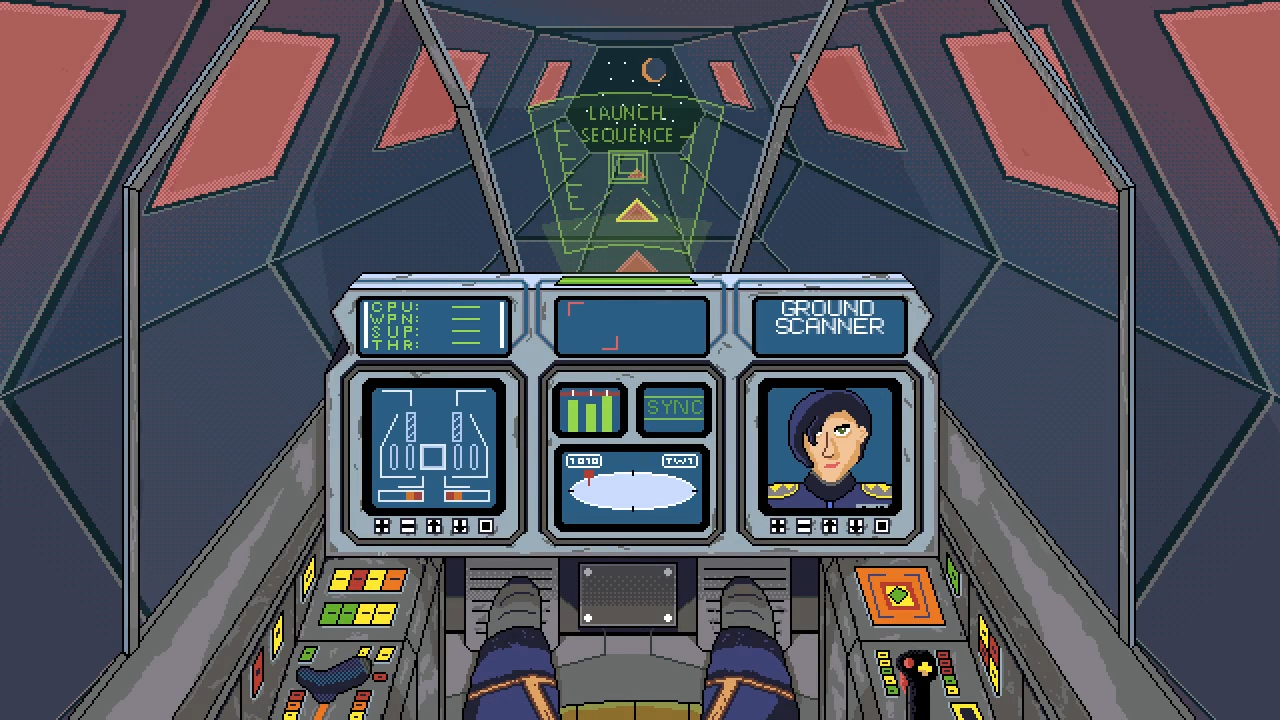
Final thoughts
That said, I can say that I’m proud of Exile Squadron. I finished a big project, created the art and coded the game, did marketing for it (which I really hate). In the end, I didn’t make the music. Although I tried, I realized that what I make is not good, and since music is one of the most important parts of games, in my opinion, I didn’t want to make some half-baked awful song. I commissioned someone for music instead, that’s what you can hear in the game. Unfortunately, I didn’t have too much money for this project, that’s why the music is not as varied as I would have liked. Maybe next time I can create music as well.
All in all, it was a great feeling to release the game, but I want to work on smaller projects in the future. Two and a half year of development all by myself is difficult and can cause burnout. I want to avoid that as much as I can.
Was Exile Squadron successful? Well, I successfully finished it, learned a lot, I think I managed to improve my skills. Financially? Definitely not, it flopped. Although I will manage to break even, and in the long run turn a small profit if everything goes right. Maybe it was the lack of strong marketing (did I say that I hate doing that), maybe I priced it too high ($9.99), maybe people just don’t like it. I will have to think more about this and improve in this area as well. Thankfully I’m doing this as a hobby, so my livelihood is not in danger, but hopefully, in the future, I will be more successful.
Files
Get Exile Squadron
Exile Squadron
Defend Earth against the Colonies in this sci-fi shoot 'em up!
| Status | Released |
| Author | One Bit Studio |
| Genre | Action |
| Tags | 2D, Arcade, Difficult, leaderboards, Pixel Art, Retro, Sci-fi, Shoot 'Em Up, Singleplayer |
| Languages | English |
| Accessibility | Subtitles, Configurable controls |
More posts
- Game released for LinuxJan 11, 2020
- Game updated to version 1.04Jan 11, 2020
- Game updated to version 1.03Nov 23, 2019
- Game updated to version 1.02Nov 23, 2019
- Announcing the 1st Exile Squadron ChampionshipNov 17, 2019
- Exile Squadron releasedNov 11, 2019
- Fixes, balancing for Early AccessOct 27, 2019
- Exile Squadron is available as Early AccessSep 30, 2019
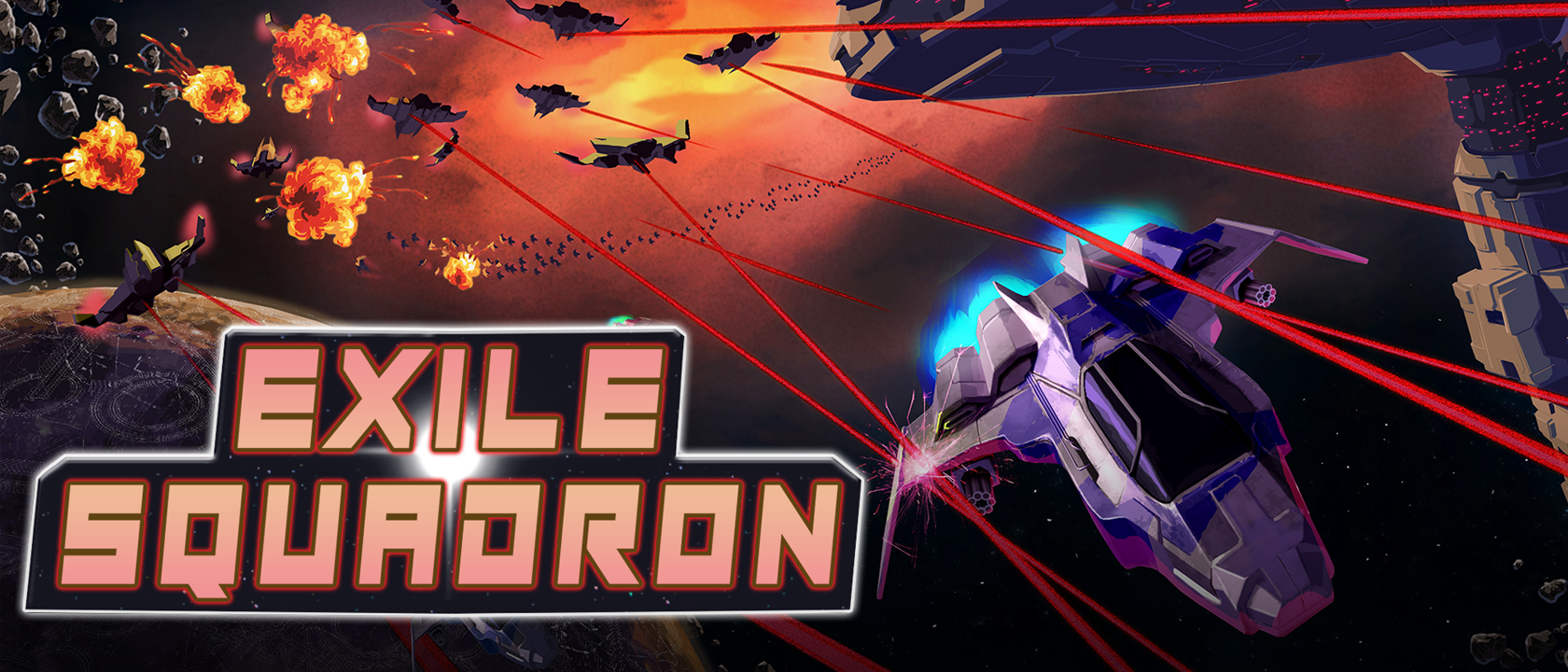
Leave a comment
Log in with itch.io to leave a comment.